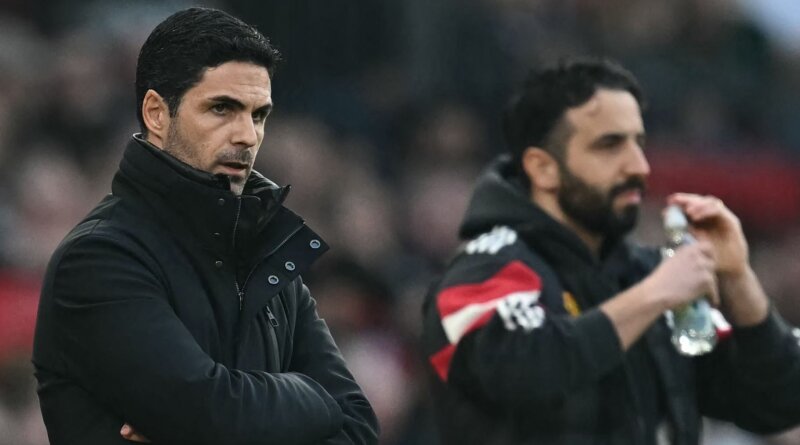Premier League Long Throw-ins Criticized as ‘Too Chaotic’
Premier League long throw-ins have come under scrutiny after a prominent set piece specialist described their current use as “too chaotic.” This season, renowned teams such as Arsenal, Liverpool, Brentford, and Manchester United have increasingly relied on long throw-ins as a revitalized tactic, aiming to unsettle opposition defenses and create goal-scoring opportunities. However, the effectiveness and execution of this technique are now being questioned by those with expertise in the art of the throw-in.
Long Throw-ins: A Resurgence Across the Premier League
Long throw-ins have enjoyed a resurgence in the Premier League, with clubs seeking creative ways to break down compact defenses. Arsenal and Liverpool, in particular, have incorporated long throws into key moments, while Brentford and Manchester United have also adopted the strategy to varying degrees of success. The goal is straightforward: use the power and trajectory of a long throw-in to deliver the ball into dangerous areas near the opponent’s goal, often bypassing the midfield entirely.
Yet, according to a former Liverpool coach and throw-in consultant, these attempts are often poorly coordinated. “The long throw-in is a powerful weapon, but what I’m seeing this season is a level of chaos that undermines its effectiveness,” he commented. The lack of precision and timing, he argues, has led to a decrease in the overall quality of this rejuvenated set piece.
Analyzing the Chaotic Execution of Premier League Long Throw-ins
The criticism hinges on several observable factors. Firstly, the delivery of the long throw-in is frequently rushed, lacking the careful build-up and awareness required to catch defenders off guard. This hurried approach often allows opposition teams to anticipate the throw and clear the danger with ease. Secondly, player positioning and movement in the penalty area can appear disorganized. Attackers and defenders jostle for position, but the absence of clearly rehearsed routines makes it difficult for the throwing team to capitalize.
Moreover, Premier League managers have been rotating throw-in takers, sometimes delegating the responsibility to players not known for their technique in this area. As a result, the level of consistency has dropped, and the number of goals or clear chances created directly from long throw-ins has not matched the increased frequency of their use.
Set Piece Experts Call for Structure and Innovation
Set piece specialists argue that while adopting the long throw-in is a positive step, it must be executed with structure and intent. “Teams like Brentford have shown how dangerous a well-drilled long throw-in routine can be,” the expert noted. “But many clubs simply take the throw quickly, hoping for chaos, rather than designing plays that exploit defensive weaknesses.” The best teams marry creativity with repetition, turning the humble throw-in into a strategic asset rather than a hopeful punt into the box.
The Historical Context of Long Throw-ins in the Premier League
Historically, the Premier League has witnessed some iconic long throw-in specialists, most notably Rory Delap of Stoke City, whose deliveries were as feared as any corner or free-kick. Delap’s throws were the result of rigorous practice and synchronized team movement, resulting in numerous goals and defensive headaches for opponents. The recent resurgence in long throw-ins is partly inspired by these past successes, but the current execution often falls short of those high standards.
Teams Under the Microscope: Arsenal, Liverpool, Brentford, and Manchester United
Each of the Premier League sides mentioned faces unique challenges with this tactic. Arsenal have looked to use Ben White and Takehiro Tomiyasu for long throws but have yet to perfect the coordination in the box. Liverpool, under Jürgen Klopp, have employed throw-in coaches, but the hurried nature of some deliveries has led to missed opportunities. Brentford remain the most consistent, having built specific routines around the throw-in. Manchester United, meanwhile, are still searching for the right blend of technique and timing.
Potential Solutions and the Path Forward
To maximize the impact of long throw-ins, experts suggest a return to basics: focused coaching, designated throw-in takers, and rehearsed routines tailored to exploit the opposition’s weaknesses. Video analysis and data-driven approaches can further refine the timing and positioning required for success.
Opinion: Long Throw-ins Need More Than Just Chaos
While the revival of this set piece brings excitement to Premier League matches, its current chaotic application is a missed opportunity. Premier League long throw-ins could become a consistent threat if teams invest the same tactical attention as they do with corners and free-kicks. Structured routines, specialized coaching, and a focus on execution are key. As the season progresses, it will be intriguing to see whether top clubs can convert chaos into calculated advantage—or whether the long throw-in will remain an underutilized asset.
For more insights, analysis, and the latest updates from the world of football, visit for more news.
Your global gateway to nonstop football coverage:
News Goal
Share this content:
